Arrived in Bristol and Roger B., my wonderful host, whisked me off to Stokes Croft where he handed me off to Chris, a guy who will probably eventually be known as the Mayor of Stokes Croft. He is one of four people who together own the People’s Republic of Stokes Croft (PRSC) building, and in it he has a storefront where local folks, many of them alcoholic or drug-addicted, drop in seeking work. We stood on the sidewalk in front of the place for a while, as he began to explain the neighborhood and his years’ long effort to fight the local council and transform the area based on a local arts community that he is part of, and while we chatted, a steady stream of characters came up to greet him, cajole him for attention, maybe a job, but always with a lot of obvious respect and affection, which he returned without judgement.
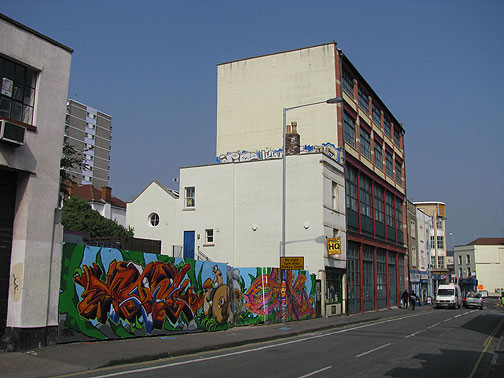
People's Republic of Stokes Croft Headquarters, Bristol, England.
His building is quite large and Chris has in it a huge collection of ceramic decals he purchased from a local firm that went out of business, and somewhere he has a couple of shipping containers full of porcelain. Stokes Croft is apparently one of the neighborhoods where the world-famous Banksy first made his mark (literally) and there’s a couple of iconic pieces of his within sight of the PRSC.
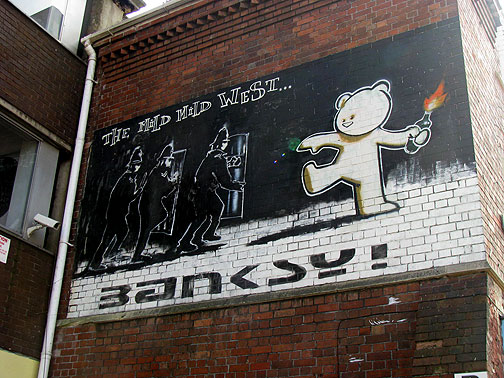
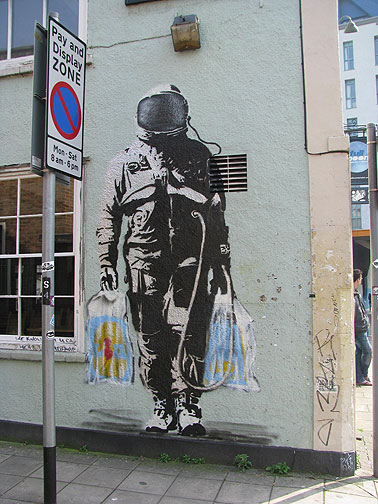
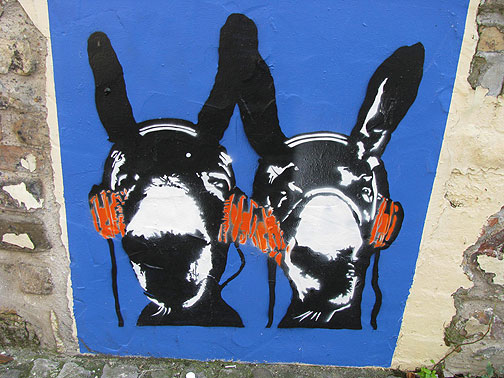
As the place straddles a busy thoroughfare that splits just to its side, there’s an odd triangular plot of land that Chris and others organized an artistic transformation of, renaming it Turbo Park with these odd Easter Island-inspired sculptures and spraypaint murals.

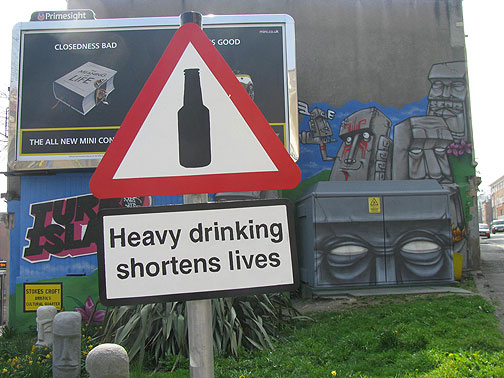
One of many unauthorized, homemade signs dotting the Stokes Croft area.
Around the near area are a lot of beautiful pieces on the walls, clearly a neighborhood that continually attracts talented street artists. There’s a huge abandoned structure that the People’s Republicans decorated with murals dubbing it a cultural center, more or less as a way to pressure the local council to make it available for such, though it stands empty now. On the doorway they placed a couple of fake gallery-like posters announcing a show called “Tagging Tate” opening in 2012 at the Stokes Croft… let’s hope so! Across from its hollow backside is a colorful anarchist squat that local officials are threatening to evict and replace with a Tesco supermarket.
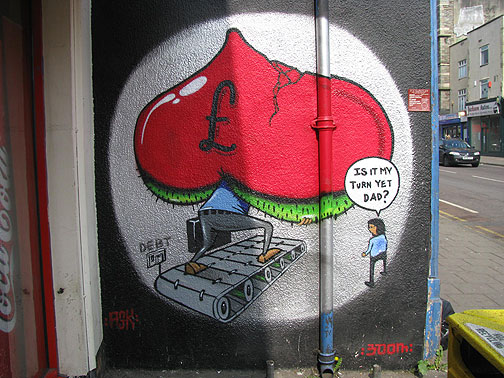
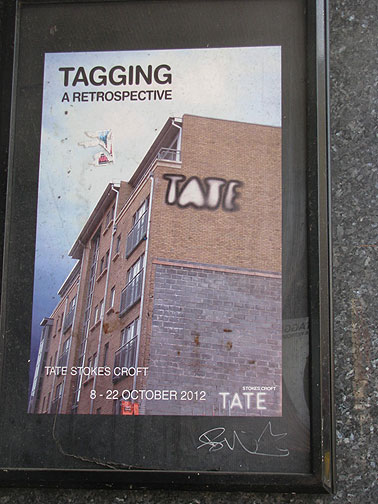
A premonitory art show announcement, c. 2012.
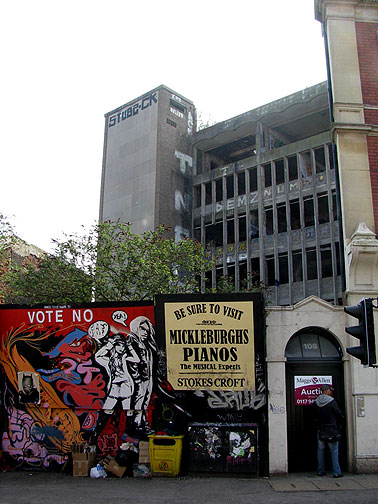
The back of the future Stokes Croft Cultural Center!

Across from the back of the proposed cultural center, an anarchist squat slated to be demolished in favor of a supermarket!
The Bristol Radical History Group, along with a local wireless collective and the anarchist bookfair collective from the Kebele autonomous center hosted my Nowtopia talk at St. Werburgh’s Community Center at 6 pm on Friday. Luckily we got a good, attentive crowd of 65 or so, and they cleaned me out of books afterwards! A good problem to have! After some hanging about we went out for a good middle eastern dinner and visit to The Plough, a renowned local pub.
After not nearly enough sleep I was up to meet Steve Stuffit, a fantastically impressive young guy here in Bristol who straddles a number of communities and initiatives. He graciously took me on a walk around the area, first to the Royate Allotments, a sprawling community garden in a small sloped valley, where the crazy genius of local permaculture, Mike Feingold, holds court.
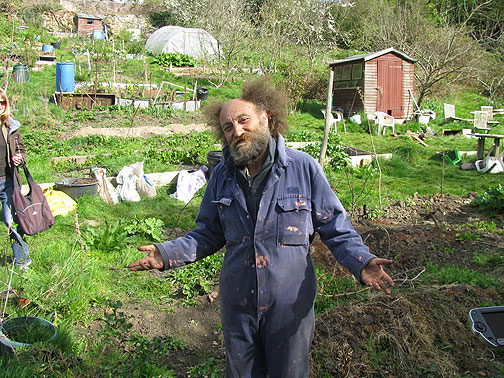
Mike Feingold, a permacultural treasure in Bristol!
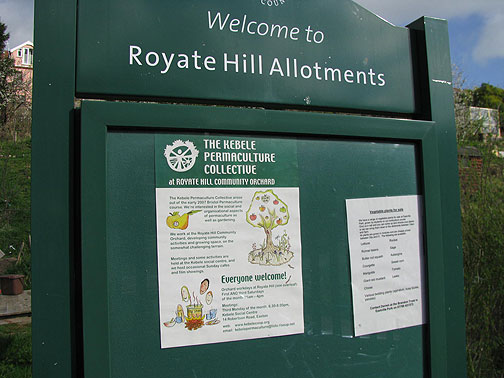

Royate Hill Allotments.
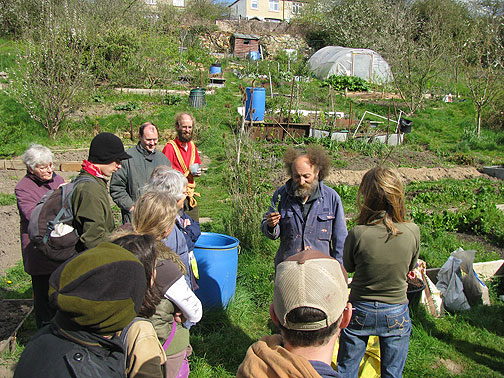
Mike Feingold demonstrating some edible plants...
At 10 a.m. we met him and a small gathering, and both Mike and I spoke for about 5 minutes each before he took us on an inspiring tour of his personal garden, a permacultural paradise on the south-facing slope. The whole area is a heavy clay and was once a site of brickmaking before becoming allotments over a century ago. A couple of decades ago, Mike explained, the allotments had been occupied about 40% by Afro-Caribbean folks, but over the years they had slowly diminished to the point that only two were left. Meanwhile, after becoming about 70% abandoned and almost declared derelict by the local council (after which they would be able to put the property out to sale to local developers), the gardens are enjoying a great resurgence. Mike is a big proponent of working less by being more efficient, and follows permacultural principles of letting natural design reduce the workload, while producing more with less input.
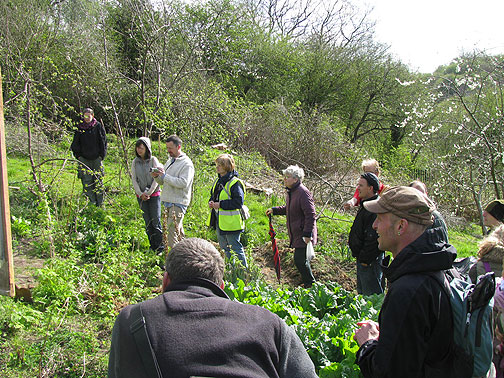
We listen in a semicircle up the hill before entering the "poly tube".
He regaled us with tastes of many wild plants growing around the garden (Jack in the Hedge, Poached Egg plant, sorrell, “another wonder plant: Alexanders!” 4 kinds of American red gooseberries, worcester berries, buffalo currants, early agnes, arnold berry from the N. American Hawthorn), and eventually left us all impressed and surprised by the sheer abundance and diversity of what he’s growing on his slope. At the top he has a kiwi tree and an amazing variety of berries, while inside his “poly tunnel” (as they call them hereabouts) he has a thriving salad garden of annual and perennial arugula (or as they call it in the UK “rocket”!), various lettuces and chards, and plenty of herbs too. In fact, his whole sloping garden connects in so many ways, from the deep-rooted plants that circulate nutrition from deep underground and bring water up for finches and bees, to the rich diversity of edible plants. He uses his “worst” bed each year to plant potatoes which he covers with a mulch of all his weeds and garden debris, which apparently prevents weeds and makes it easy to harvest spuds sequentially for months into the winter. “Growing vegetables is #14 on my list of importance here in my allotment… #1 is my mental health!”

Jack in the Hedge, a fantastic garlicky tasting wild leafy plant, suitable for salads and just munching!
Leaving the Royate we traversed some other impressive garden areas (allotments as they’re called here) and walked down the Bristol-Bath cycle path, built on an abandoned railway, and by my old friend Josh Hart’s account, one of the real treasures of living in Bristol. Steve too raved about the cyclepath as a unique public space, where not only is it jammed daily with commuting cyclists, but alongside people plant edible plants and many conversations percolate in this long narrow but crucially, public, space. By now Tim was in the conversation too, and he filled me in on how Sustrans (a national cycling advocacy group) and local gardening groups were too often co-opted by gov’t funding into supporting patently bad projects, but I lost the thread of specifics in his account. It was easy to imagine based on many such experiences elsewhere.
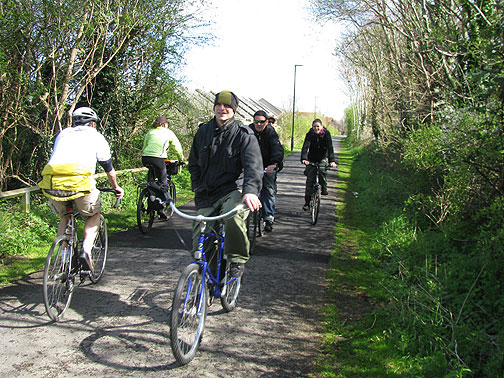
Bristol-Bath cycle path.
We arrived at Kebele Social Center for a delicious vegan breakfast (I was starving by then!) and Tim gave me a tour of the jam-packed building, housing a library, bike repair shop, workshop, kitchen, cafe, art production room, and office.
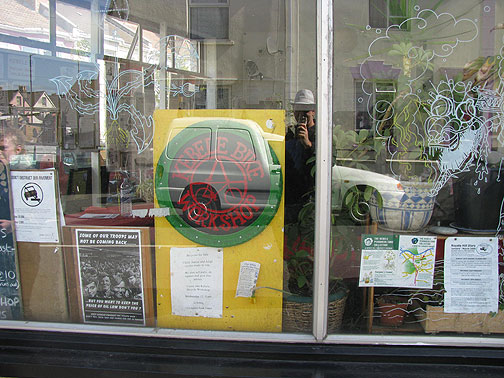
After our meal and never-ending political conversation, we walked a short distance to the Eastside Roots project, a new permacultural community gardening effort alongside the railroad line. Jenny, one of the six directors, was there, conducting some hands-on training with new volunteers, and kindly took some time to give us a quick tour of the place. I was reminded of New York’s HighLine Project, since like that, this garden is being built linearly in an old railroad path. Eventually they dream of taking over the elegant century-old bridge at the far end, to extend their garden. A lot of lovely artistic additions have already been built, from the shelter with the living roof to the metal branch sculptures over the gate that you can see in several of these photos.
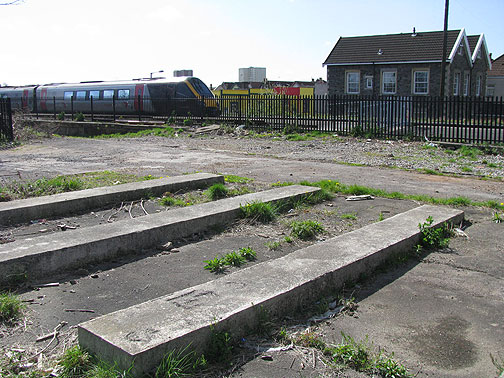
Eastside Roots before gardening!
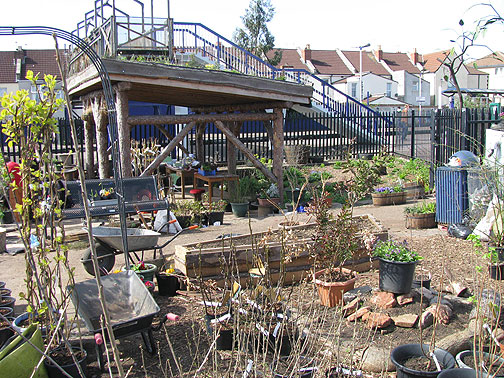
Eastside Roots after much volunteer effort.
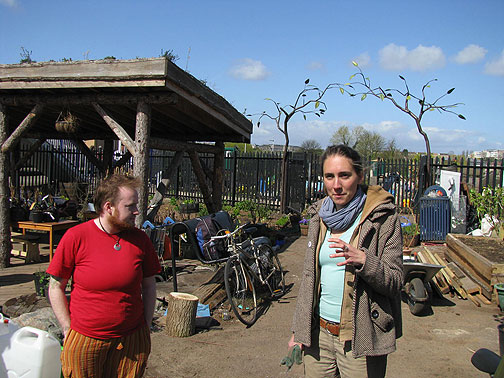
Jenny and one of the volunteers, sculpture gate and living roof on shelter behind.
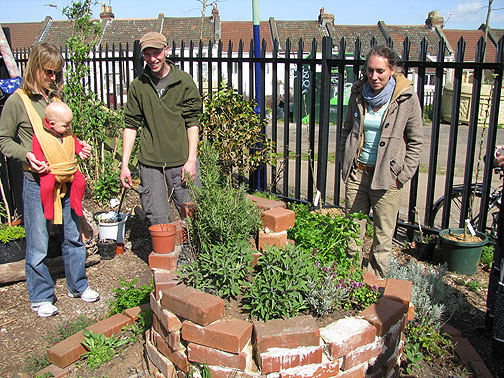
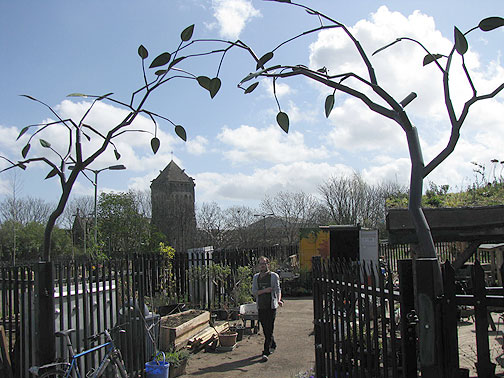
Looking back from the embankment, through the sculpture gate, towards the old church.
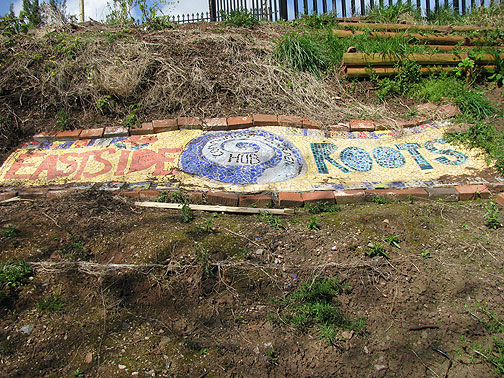
As we were rushing to catch my train we went down the slope past this nice mosaic and these guys working the land, opening it up for new gardening efforts…
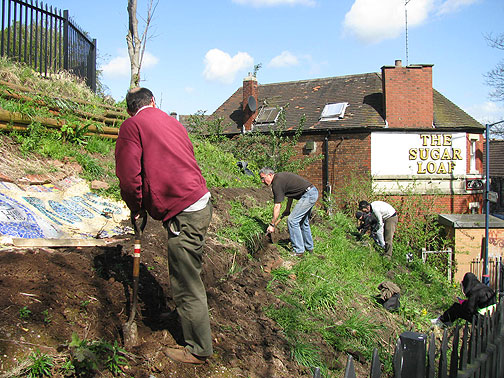
What an impression Bristol leaves me with! Tons of smart, engaged people, lots of great initiatives, from radical historians to permaculturists to cyclists and public artists. This is a city I will definitely have to visit again!












Leave a Reply